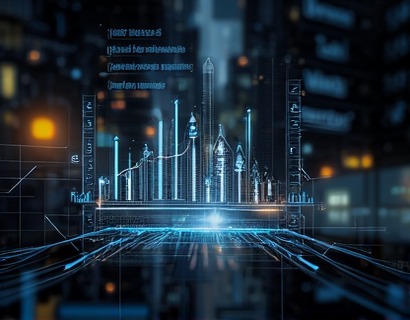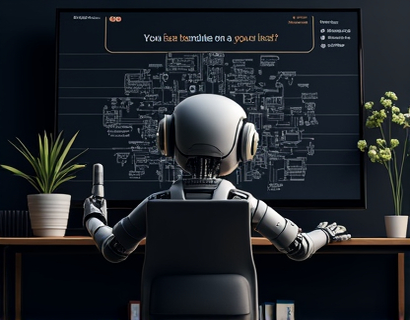Smart Home Elevation: Transforming Living Spaces with Cutting-Edge Appliances
In the rapidly evolving landscape of home technology, the concept of smart home elevation has emerged as a transformative force, redefining the way we interact with our living spaces. This phenomenon involves integrating advanced, intelligent appliances into our homes, creating an environment that is not only more convenient but also more efficient and sustainable. The latest innovations in smart home technology are designed to seamlessly blend into our daily routines, offering unparalleled convenience and enhancing the overall quality of life.
The journey towards a smarter home begins with understanding the core components that make up a smart home ecosystem. At the heart of this ecosystem are intelligent appliances that communicate with each other and with the homeowner through a central hub or smart home app. These devices range from smart thermostats and lighting systems to advanced security cameras and kitchen appliances. Each piece of technology is designed to operate efficiently, learn from user behavior, and adapt to optimize performance.
Smart Thermostats: The Brain of Energy Management
One of the most impactful smart home appliances is the smart thermostat. These devices go beyond simple temperature control, offering features like remote access, scheduling, and energy usage analytics. By learning your daily routines, a smart thermostat can automatically adjust the temperature to save energy when you're away and ensure your home is comfortable upon your return. This not only enhances comfort but also significantly reduces energy bills. For instance, models like the Nest Learning Thermostat use advanced algorithms to predict and adapt to your preferences, making energy management both intuitive and effective.
Another notable feature of smart thermostats is their integration with other smart devices. For example, when combined with smart window treatments, these thermostats can adjust the lighting and temperature based on the sun's position, further optimizing energy usage. This level of integration demonstrates the potential of smart home technology to create a cohesive and efficient living environment.
Smart Lighting: Illuminating the Future
Smart lighting systems represent another significant step in smart home elevation. These systems offer a range of benefits, from energy savings to enhanced security and ambiance control. Unlike traditional lighting, smart lights can be controlled remotely via a smartphone app or voice commands through smart speakers. This flexibility allows homeowners to adjust lighting settings based on their current needs, whether it's bright light for working or soft light for relaxation.
Energy efficiency is a key advantage of smart lighting. LED bulbs, when used in smart systems, consume significantly less power compared to conventional bulbs. Additionally, these systems can be programmed to turn off automatically when no one is in the room, further reducing energy waste. Some advanced systems even adjust the color temperature and brightness based on the time of day, mimicking natural light cycles to promote better sleep and well-being.
Smart Security: Protecting Your Home with Intelligence
Security is a paramount concern for homeowners, and smart security appliances have revolutionized the way we protect our homes. Smart cameras, door locks, and motion sensors work together to provide comprehensive security coverage. These devices can be monitored and controlled remotely, allowing homeowners to check on their property from anywhere in the world. For example, smart door locks can be controlled via a smartphone, enabling you to grant temporary access to guests or service providers without the need for physical keys.
One of the most advanced features of smart security systems is their ability to integrate with other smart devices. For instance, if a smart security camera detects motion, it can trigger smart lights to turn on, making it appear as though someone is home even when the house is empty. This not only enhances security but also deters potential intruders. Additionally, many smart security systems offer automated alerts and notifications, keeping homeowners informed about any unusual activity.
Smart Kitchen Appliances: Cooking with Intelligence
The kitchen is often the heart of the home, and smart appliances are transforming this space into a hub of innovation. Smart refrigerators, ovens, and cooktops are just a few examples of how technology is elevating the cooking experience. Smart refrigerators, for instance, come equipped with features like built-in cameras, inventory management, and even recipe suggestions based on the ingredients stored inside. These appliances can also integrate with grocery delivery services, making it easier to keep your pantry stocked.
Smart ovens and cooktops offer precise temperature control and cooking assistance. Some models can be preheated remotely, ensuring your oven is ready when you are. Advanced ovens may even include features like automatic cooking programs that adjust settings based on the type of food being prepared. This not only simplifies the cooking process but also helps prevent overcooking or burning meals.
Smart Home Automation: Centralizing Control
At the core of a smart home is a central automation system that ties all these devices together. This system, often controlled through a central hub or a smart home app, allows homeowners to manage multiple devices with ease. The convenience of having a single interface to control lighting, temperature, security, and entertainment systems cannot be overstated. This centralization not only simplifies daily tasks but also enhances the overall user experience.
Voice assistants like Amazon Alexa and Google Assistant play a crucial role in smart home automation. These devices can be used to control smart appliances through voice commands, making the technology accessible to everyone. For example, you can ask your voice assistant to turn off all lights, adjust the thermostat, and lock the doors with a single command. This level of convenience is particularly beneficial for individuals with mobility issues or those who prefer hands-free operation.
Energy Efficiency and Sustainability
One of the most compelling reasons to adopt smart home technology is the potential for significant energy savings and environmental benefits. Smart appliances are designed to operate efficiently, reducing energy consumption and lowering utility bills. For instance, smart thermostats can save up to 10-12% on heating and cooling costs by optimizing temperature settings. Similarly, smart lighting systems can reduce electricity usage by up to 80% compared to traditional lighting.
Beyond individual savings, the collective impact of smart home technology on energy consumption is substantial. As more homes adopt these efficient systems, the overall demand for energy decreases, contributing to a more sustainable future. Additionally, many smart devices are compatible with renewable energy sources, further enhancing their eco-friendly credentials. This alignment with sustainability goals makes smart home elevation not just a trend but a responsible choice for modern living.
Challenges and Considerations
While the benefits of smart home technology are clear, there are several challenges and considerations to keep in mind. One of the primary concerns is privacy and security. Smart devices collect and transmit data, which can be a target for cyberattacks. It is essential to choose reputable brands that prioritize security and to implement strong password practices and regular software updates to protect your home network.
Another consideration is the initial cost of smart appliances, which can be higher than their conventional counterparts. However, the long-term savings on energy bills and the added convenience often justify the investment. Additionally, the interoperability of different smart devices can sometimes be a challenge, as not all systems are compatible. Choosing devices from brands that adhere to open standards can help ensure a seamless integration.
Future Trends in Smart Home Technology
The future of smart home technology is exciting and rapidly evolving. One of the most promising trends is the integration of artificial intelligence (AI) into home appliances. AI-powered devices can learn from user behavior and make predictive adjustments to optimize performance and comfort. For example, a smart coffee maker could start brewing your coffee at the same time every morning based on your routine.
Another area of development is the Internet of Things (IoT), which connects a wide range of devices beyond traditional appliances. Smart home systems are increasingly incorporating IoT devices such as smart locks, smart plugs, and even smart gardening systems. This expansion creates a more interconnected and intelligent living environment.
Lastly, the rise of 5G technology is set to revolutionize smart home connectivity. With faster and more reliable internet speeds, the potential for real-time data transmission and remote control of devices will become even more seamless. This advancement will enable more sophisticated applications, such as remote monitoring of home systems and enhanced virtual reality experiences within the home.
In conclusion, smart home elevation represents a significant leap forward in modern living. By integrating advanced, intelligent appliances, homeowners can enjoy a more convenient, efficient, and sustainable lifestyle. The latest innovations in smart home technology not only enhance daily routines but also pave the way for a more connected and responsible future. As the technology continues to evolve, the possibilities for creating a smarter home are endless.










































